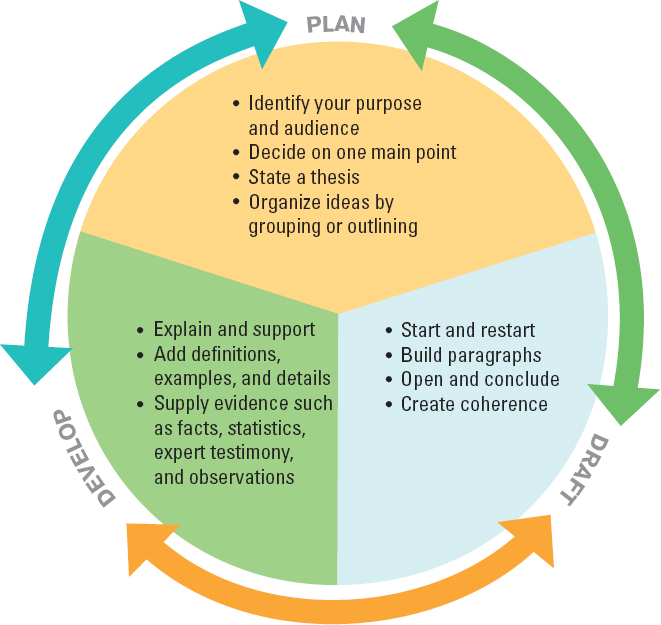Planning, Drafting, and Developing
Next you will plan your paper, write a draft, and develop your ideas further. The sections titled “Planning, Drafting, and Developing” will help you through these stages for the assignment in that chapter.
Planning. Having discovered a burning idea to write about (or at least a smoldering one) and some supporting material (but maybe not enough yet), you will sort out what matters most. If you see one main point, or thesis, test various ways of stating it, given your purpose and audience:
| MAYBE | Parking in the morning before class is annoying. |
| OR | Campus parking is a big problem. |
Next arrange your ideas and material in a sensible order that will clarify your point. For example, you might group and label your ideas, make an outline, or analyze the main point, breaking it down into parts:
Parking on campus is a problem for students because of the long lines, inefficient entrances, and poorly marked spaces.
But if no clear thesis emerges quickly, don’t worry. You may find one while you draft — that is, while you write an early version of your paper.
For practice developing a main point, go to the interactive “Take Action” charts in Re:Writing.
Drafting. As your ideas begin to appear, welcome them and lure them forth so they don’t go back into hiding. When you take risks at this stage, you’ll probably be surprised and pleased at what happens, even though your first version will be rough. Writing takes time; a paper usually needs several drafts and maybe a clearer introduction, stronger conclusion, more convincing evidence, or even a fresh start.
See the Quick Research Guide for advice on using a few sources.
Developing. Weave in explanations, definitions, examples, details, and varied evidence to make your ideas clear and persuasive. For example, you may define an at-risk student, illustrate the problems of single parents, or supply statistics about hit-and-run accidents. If you need specific support for your point, use strategies for developing ideas — or return to those for generating ideas. Work in your insights if they fit.
